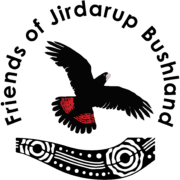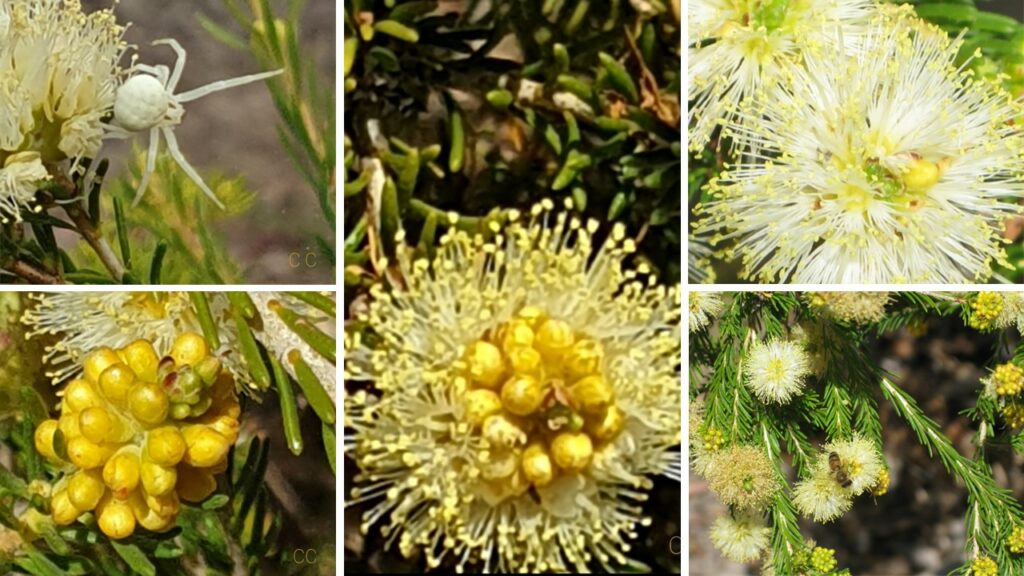By Clare Caldeira.
Melaleuca systena, Coastal Honeymyrtle.
In summer, we see white flowering Eucalypts, first the Jarrah, then the Marri and these bushes, Melaleuca systena, covered in white pompoms throughout the bushland. It is one of nearly 190 understory plants and one of seven little summer flowering myrtles.
Description: It is a rounded bush with a dense appearance of tiny leaves crowded into a 1 to 1.5m high ball. Its leaves are approximately 4-15.5mm long and 5mm wide. Multiple flowers are grouped into pompoms on the end of the branches. Each pompom contains 3-9 groups of flowers in sets of three. It has a slightly pungent light musk odour The flowers don’t last long but once it begins flowering stimulated by the first hot days of spring, Melaleuca systena continues to flower in waves through the warmer months. Sometimes this continues into winter.
Seed forms soon after and is seen in tiny capsule aggregates just below new growth.
Ecology: Its faint but distinct odour lures moths, bush cockroaches and native bees. It makes a good windbreak, and its roots have good sand binding properties.
Mycorrhiza: Melaleuca systena can form both ectomycorrhizal fungi (ECM) and arbuscular mycorrhizal fungi (AMF) in its roots. The presence of both types of mycorrhizae shows that it can handle both alkaline and acid soils and may have a special advantage in coping with climate change.
Occurrence: In the bushland it occurs in the sunny outskirts of tree shade and in the transition zone of the restionaceous ephemeral damplands. It thrives in sand and limestone. On the Swan Coastal Plain it appears to spread inland from the coast and is found in the stretch between Shark Bay and Augusta.
Melaleuca systena is not a threatened species.
Perth Botanist Greg Keighery has found some interesting speciation in this plant across the Swan Coastal Plain and it is intrinsic to the newly declared Limestone Teatree TEC (Threatened Ecological Community). It is very suitable for home gardens and would be a welcome addition to the local ecosystem. Native nurseries such as APACE have tube stock and seeds are available for purchase from native seed sellers such as Nindethana.



